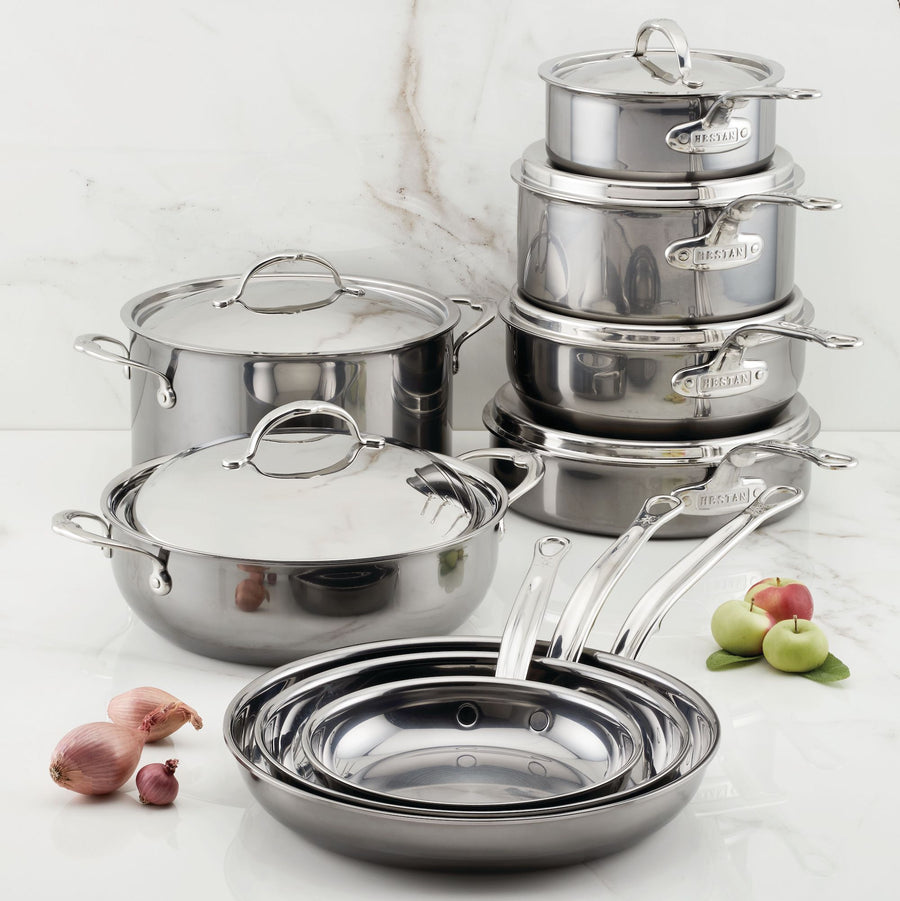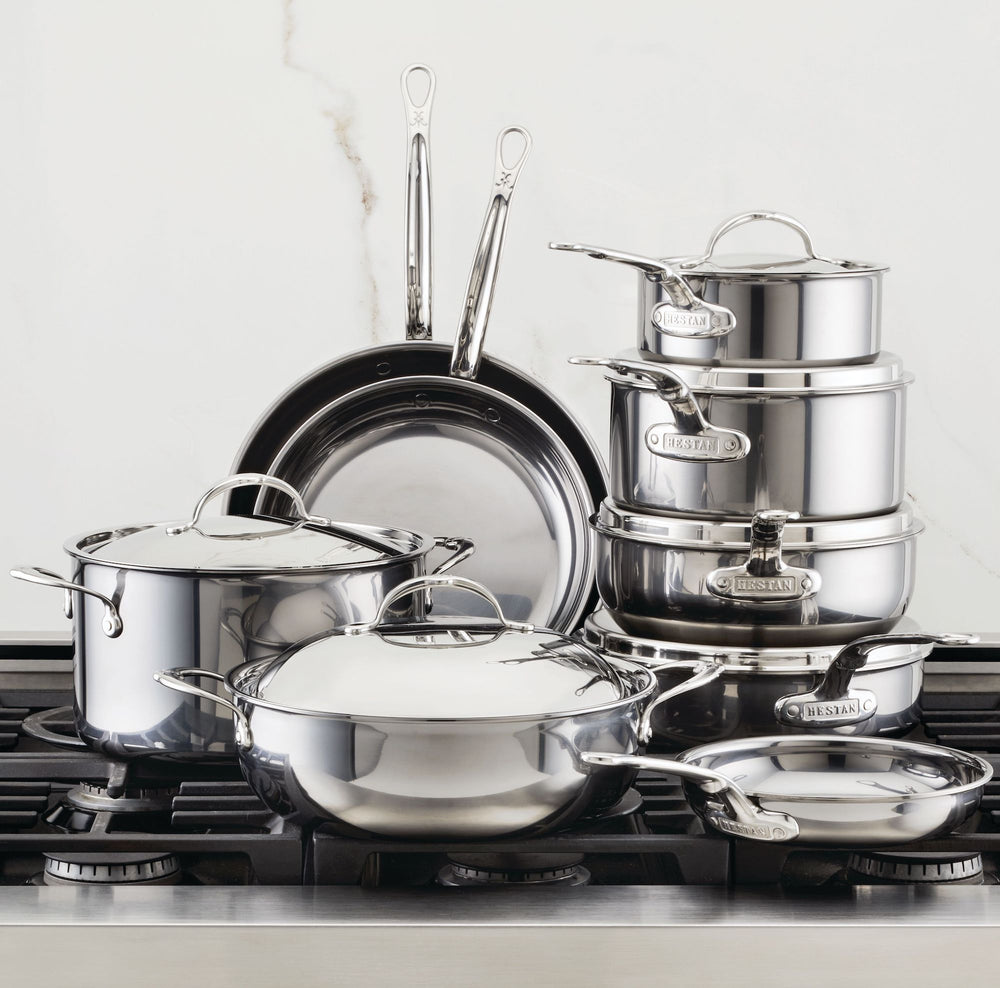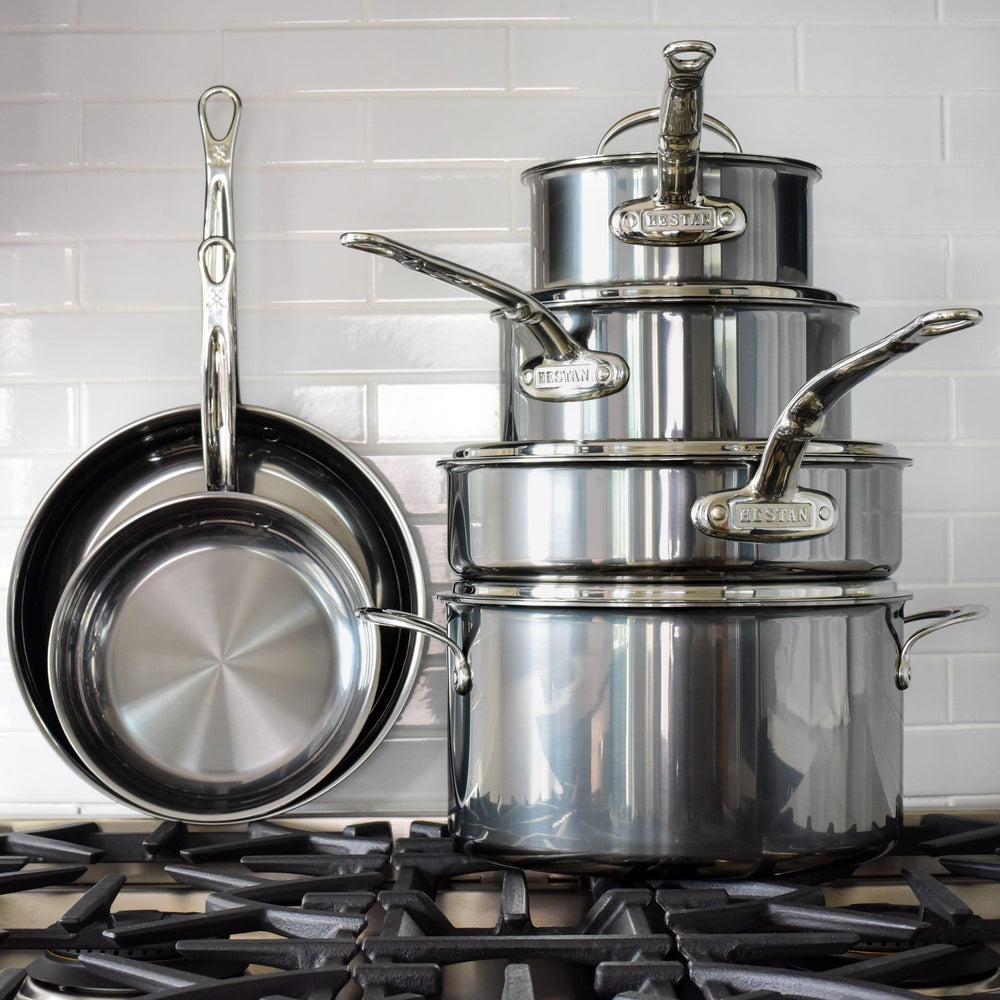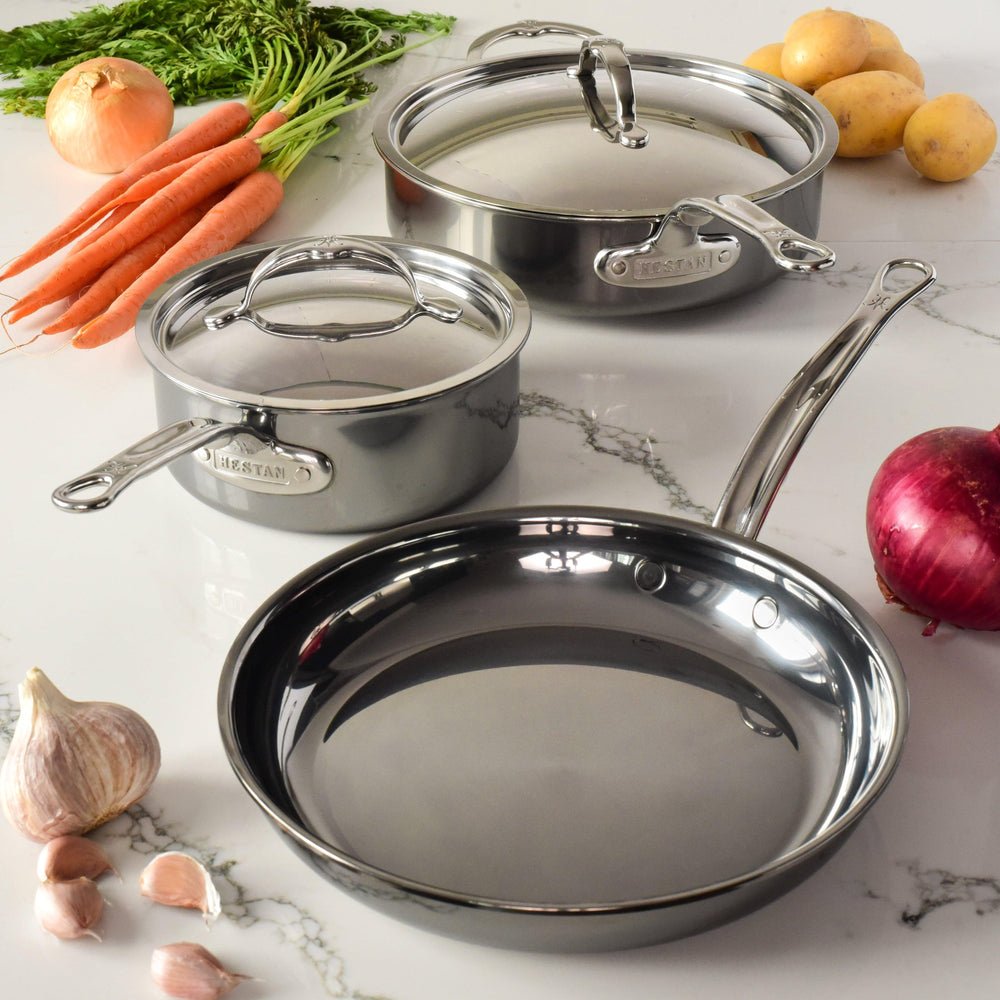Finding the Best Induction Cookware Set
Discerning home chefs understand that top-quality cookware is an essential tool for their high-performance kitchens, and typically, when you have so much confidence in your set of pots and pans, it’s difficult to try something new.
However, as induction cooktops gain ground in gourmet kitchens, cookware sets that are compatible with these ranges have made their mark. But there’s still a bit of mystery as to what makes these pans unique and how to find ones that suit your level of cooking.
If you’re wondering how to find the best induction cookware set, not to mention whether you even need new pots and pans, this post is for you. We demystify how induction cookware sets work with induction cooking and help you understand what to look for to find the highest quality induction cooking sets.

Differences with an Induction Cookware Set
Induction cookware differs from other types primarily due to its compatibility with induction cooktops. Here are four key factors that distinguish induction cookware:
- Magnetic properties: Induction cookware must have magnetic properties to interact with the electromagnetic field generated by the induction cooktop. Materials like stainless steel, cast iron, and some types of enameled cookware are suitable for use with induction cooktops.
- Flat and ferrous base: Induction cookware typically features a flat and ferrous base that allows it to make direct contact with the induction cooktop surface. This ensures efficient heat transfer and uniform cooking results.
- Rapid heating: Induction cookware heats up quickly and responds rapidly to changes in temperature settings, offering precise control over the cooking process. This allows for faster cooking times and more efficient energy usage compared to traditional gas or electric cooktops.
To check if your cookware is compatible, you can perform a simple test using a magnet. If the magnet sticks firmly to the bottom of the cookware, it is likely induction compatible. If the magnet does not stick, it indicates that the cookware is not suitable for use with an induction cooktop.
However, compatible cookware doesn’t mean it will offer the best performance. To understand what makes high-quality induction cookware, it’s important to understand how induction cooking differs from other range types.
Why Induction Cooking Requires an Induction Cooking Set
For seasoned home cooks venturing into the world of induction cooking, it's a transition that promises both efficiency and precision. Unlike traditional gas stovetops, which rely on open flames to generate heat, induction cooktops harness the power of electromagnetism to directly heat your cookware.
This innovative technology offers several advantages:
- Faster heat-up times: Induction cooktops heat up incredibly quickly, providing instant responsiveness when you adjust the temperature settings. This means you can swiftly move from a gentle simmer to a rolling boil with ease, giving you precise control over your cooking.
- Better heat efficiency: Induction cooking is highly efficient, as it delivers heat directly to the cookware itself. This eliminates the heat loss associated with gas stovetops, where much of the energy escapes into the surrounding air. With induction cooking, you can be confident that your pans are feeling the heat.
However, one crucial consideration when transitioning to induction cooking is the need for compatible cookware. Because induction cooktops rely on magnetic fields to generate heat, cookware with non-magnetic bottoms, such as aluminum or copper, will not heat up on an induction cooktop.
The compatibility of your cookware with an induction cooktop is primarily based on its material. Induction cooktops rely on magnetic fields to generate heat, so only pots and pans made from ferrous materials, such as cast iron or magnetic stainless steel, will work effectively.
While this may require some adjustments to your kitchen arsenal, investing in induction-compatible cookware opens up a world of culinary possibilities. Not only will you enjoy faster cooking times and more precise temperature control, but you'll also appreciate the convenience and energy efficiency that induction cooking brings to your kitchen and home.

The Best Induction Pan Set—What to Look For
When looking for the best induction cookware set, you can select high-quality, long-lasting induction cookware by considering the following factors:
- Material: Opt for cookware made from high-quality materials that are compatible with induction cooktops, such as stainless steel, cast iron, or enameled cast iron. These materials offer durability, even heat distribution, and resistance to warping or scratching.
- Base thickness: Look for cookware with a thick and flat base, as this ensures better contact with the induction cooktop surface for efficient heat transfer. Thicker bases also help prevent hot spots and ensure more consistent cooking results.
- Weight: Choose induction cookware that feels sturdy and substantial without being excessively heavy. Lightweight cookware may not distribute heat evenly or withstand high cooking temperatures as effectively as heavier options.
- Construction quality: Inspect the construction quality of the cookware, including the handles, lids, and joints. Find cookware that is well made with securely attached handles and well-fitted lids to prevent heat loss and ensure ease of use and durability over time.
- Reviews and recommendations: Since you get a lot of inspiration from chefs, check out what chefs use in their kitchens. If an induction cookware set can handle the rigors of an industrial kitchen, you can be sure it will withstand any measures you put it through! You should also read customer reviews and seek recommendations from trusted sources to gauge the performance and durability of the induction cookware brands and models you're considering. Pay attention to feedback regarding heat distribution, ease of cleaning, and overall longevity.
By considering these factors and investing in high-quality induction cookware, you can enjoy efficient cooking performance and long-lasting durability for years to come.
Stainless Steel Cookware Set vs. Cast Iron
When it comes to induction cooking, stainless steel and cast iron are among the most popular choices for cookware materials. Both have their advantages, but stainless steel is particularly favored for its versatility and durability.
Stainless steel cookware is compatible with induction cooktops because it contains iron, which makes it responsive to magnetic fields. It heats up quickly and distributes heat evenly, allowing for precise temperature control—a key factor in achieving consistent cooking results. Additionally, stainless steel is non-reactive, meaning it won't interact with acidic or alkaline foods, preserving the flavor and integrity of your dishes.
Stainless steel is often preferred over cast iron for induction cooking due to several key reasons:
- Compatibility: Stainless steel contains iron, which makes it inherently compatible with induction cooktops. Induction cooking relies on magnetic fields to generate heat, and stainless steel responds well to these fields, allowing for efficient heating and precise temperature control.
- Versatility: Stainless steel cookware is highly versatile and can be used for a wide range of cooking tasks, from searing and sautéing to boiling and simmering. It is also suitable for cooking a variety of foods, including acidic ingredients like tomatoes and citrus, which can react with cast iron and affect the flavor of the dish.
- Even heating: Stainless steel distributes heat evenly across the cooking surface, preventing hot spots and ensuring uniform cooking results. This is particularly important for induction cooking, where precise temperature control is essential for achieving consistent outcomes.
- Durability: Stainless steel is known for its durability and resistance to corrosion, rust, and staining. It is less prone to damage from acidic foods or prolonged exposure to moisture compared to cast iron, making it a long-lasting investment for your kitchen.
- Maintenance: Stainless steel cookware is generally easier to clean and maintain than cast iron. It can be washed with soap and water and is dishwasher safe, whereas cast iron requires special care to prevent rusting and maintain its seasoning.
Overall, while both stainless steel and cast iron have their merits, stainless steel is often preferred for induction cooking due to its compatibility, versatility, even heating, durability, and ease of maintenance.
If you’re looking for the best induction cookware set for your kitchen, consider the stainless steel pots and pans made by Hestan. The ProBond Hestan cookware set is manufactured to the highest quality. Made in Italy of stainless steel, this long-lasting cookware set offers easy maintenance and high performance for a wide range of culinary tasks.











